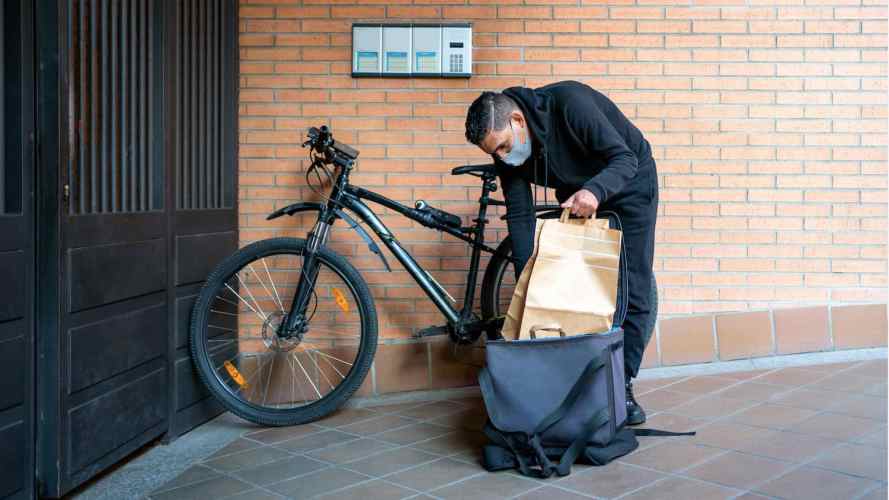2020 is the year that changed retail forever. When COVID-19 created an international emergency, we saw massive spikes in demand for groceries and other household essentials and an extraordinary surge in digital growth. Q2 alone experienced an unprecedented 71% increase in digital growth compared to the previous year. Even when stores reopened their doors, contactless payment and delivery options, buy-online-pickup-in-store (BOPIS), and self-checkout were prized amidst widespread health and safety concerns.
What is BOPIS?
BOPIS is an acronym for buy-online-pickup-in-store. It’s a hybrid shopping model for consumers buying online. As the name indicates, shoppers browse, purchase, and pay remotely, then go to a physical storefront to pick up their goods.



Retailers continue to respond to the crisis with agility and resilience as they navigate dramatic shifts in category preferences, channel preferences, and consumer shopping behavior. Here’s what every retailer can do to address the challenges and build trust in the new era of retail.
Improve merchandise agility and visibility
At the beginning of the pandemic, panicked shoppers cleared store shelves of hand sanitizer, bottled water, and toilet paper. Even bread and canned goods became scarce. Between March 13-15, 44% of household grocery shoppers in the U.S. said they were stocking up on cleaning supplies, medications, personal care items, and food to keep themselves healthy and prepared for whatever may come next.
Fast forward to today as the world undergoes the second wave of coronavirus. Consider these best practices to address sudden, unexpected shifts in product demand:
- Ramp up efforts to replenish. As stockroom inventory dwindles, stores need to bring in more product as fast as possible. This requires a complete view of store and digital inventory, and a connected partner ecosystem to work directly with suppliers in real time to procure new supplies.
- Ensure every shopper has access to essentials — digitally. Consumers have increasingly turned to online channels for purchasing essential products, which is a huge shift for both them and retailers. This behavior is most likely here to stay. For example, food and beverage was the third-highest growing category during Cyber Week.
- Refactor manufacturing and supply chains. Brands such as Crocs, Canada Goose, and New Balance used their scale, leverage, and agility to provide safety and protective products to healthcare and other professionals on the front line. Now, retailers also have the opportunity to think through agile manufacturing and supply chains that can not only respond to the global crisis, but to the natural ups and downs of consumer demand.
- Communicate your efforts to shoppers. People expect transparent, ongoing communications during this time. Add notices to your websites or to store doors to reassure shoppers that supplies will continue to arrive and to explain any other new policies. Update your help center and redirect shoppers for more information.
Adopt contactless engagement
Demand for delivery has skyrocketed since shoppers began staying home more often to stop the spread of the virus. In fact, as Salesforce predicted, the industry is experiencing a significant strain with last-mile fulfillment, which caused a 5% capacity overload between the week before Cyber Week through Boxing Day for traditional delivery providers (roughly November 24 through December 26), making contactless engagement more important (and challenging) than ever.
Contactless engagements go into three main buckets for retailers:
- Contactless payment: This includes mobile wallet options, like Apple Pay and PayPal, as well as alternate payment methods via mobile, wearables, and tap-and-go card payments. Thirty-seven percent of customers say they have used contactless payments more than usual compared to before the pandemic, according to a Salesforce consumer survey.
- Contactless fulfilment: Think more pickup and delivery options that offer flexibility to fulfillment — without ever coming face-to-face with someone. Quick Start Commerce Solutions enable retailers to eliminate in-person visits to multiple stores in search of a hard-to-find item and unnecessary contact at the store. Shoppers simply walk in and pick up their orders or take advantage of curbside delivery.
- Contactless services: Virtual try-ons, digital screens at pickup points to showcase available merchandise (and encourage the splurge), and artificial intelligence (AI) to help shoppers find the perfect product match in the absence of in-person styling are examples of contactless services that enhance the buying experience.
Enforce policies to ensure safety
The unprecedented threat to health and safety calls for never-before-needed measures in brick-and-mortar stores. For in-person shopping, consider the following practices:
- Designate specific shopping times for elderly or immunocompromised customers. Forty-two percent of customers expect adjusted store hours for vulnerable groups, according to a Salesforce consumer survey. Welcome these individuals when the store first opens in the morning, when it is cleanest and fully stocked.
- Implement social distancing. In accordance with guidelines from the Center for Disease Control and Prevention, limit the number of people in the store at one time and instruct shoppers to remain six feet apart. Some grocery stores have put tape on the ground to mark where shoppers should stand while waiting to enter or check out.
- Step up cleaning efforts. Modify open hours to facilitate regular deep cleaning. Install hand sanitizer dispensers throughout the store and encourage shoppers and employees to use them.
Recognize essential workers with empathy and creativity
Grocery and pharmacy workers have been frontline heroes in this pandemic, especially those who come into contact with the public, such as cashiers and stockers. Warehouse workers, who sometimes work in close proximity, also put their health on the line. Leaders can continue to support them in multiple ways:
- Increase compensation for hourly employees. Acknowledge their hard work and their risk of exposure with a tangible raise in pay. For example, San Antonio-based H-E-B raised pay by $2 per hour.
- Prioritize worker health and safety. Increase the cleaning cadence for warehouses and other workspaces and provide personal protective equipment (PPE). Bolster leave policies to encourage sick workers to stay home and fully recover. See how other employers are bringing health and wellness into the workplace, and learn about more ways to enhance your employee’s wellbeing.
- Be transparent as your response evolves. Establish a crisis strategy and craft templates for communications. Share changes in policy to all stakeholders and encourage feedback. For example, H-E-B established a coronavirus hotline for employees in need of information or assistance.
Build confidence with shoppers
Learn more about the four pillars that build trust with consumers in The New Retail Playbook.



Our series Becoming Retail shares the insights, experiences, and stories from retail leaders in the midst of reimagining the retail experience. Check out some recent articles:




























